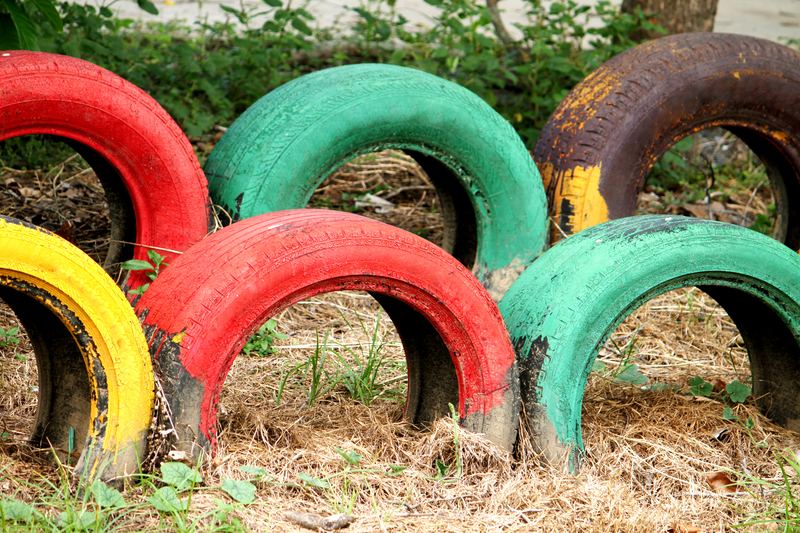Packaging and Cardboard Disposal: A Step Towards Greener Practices
In today's fast-paced world, packaging and cardboard disposal have become issues of significant environmental concern. With the surge of e-commerce and increased consumption, the demand for packaging materials, especially cardboard, is sky-high. Yet, improper disposal and wasteful packaging contribute to pollution and strain our planet's resources. In this comprehensive article, we explore the impact of packaging waste, eco-friendly packaging solutions, and practical ways to dispose of cardboard responsibly--essential steps toward a greener and more sustainable lifestyle.
The Growing Challenge of Packaging Waste
The modern consumer society is heavily reliant on packaging for product safety, branding, and convenience. Cardboard, in particular, stands out as a commonly used packaging material due to its versatility, strength, and recyclability. However, this convenience comes at an environmental cost.
- Increased Production: Annually, millions of tons of cardboard are produced worldwide, much of which is single-use and destined for landfills.
- Environmental Impact: Excessive packaging results in increased waste production, greenhouse gas emissions, and deforestation.
- Contamination Risk: Improperly disposed cardboard can become contaminated, making recycling harder and less effective.
Addressing the issue of packaging and cardboard waste is crucial not only for waste reduction but also for promoting a circular economy where materials are reused and recycled efficiently.

Understanding the Importance of Sustainable Packaging
Sustainable packaging refers to the design and use of packaging materials in a way that reduces environmental impact and ecological footprint. It encompasses the entire lifecycle of the packaging--from raw material sourcing and manufacturing to usage and eco-friendly disposal.
Key Benefits of Eco-Friendly Packaging
- Resource Conservation: Sustainable packaging opts for renewable, recyclable, or biodegradable materials such as recycled cardboard or plant-based plastics.
- Reduced Carbon Emissions: Lighter, optimized packaging designs decrease transportation emissions.
- Waste Minimization: Encourages consumers and businesses to use only necessary packaging, reducing overall waste generation.
- Enhanced Brand Value: Companies embracing green practices are viewed more favorably by eco-conscious consumers.
Making the switch to sustainable and recyclable packaging can, therefore, make a profound difference in protecting our environment and promoting responsible consumption.
The Lifecycle of Cardboard Packaging
Before delving into the best practices for cardboard disposal, it's important to understand how cardboard packaging travels through its lifecycle:
- Raw Material Acquisition: Cardboard is primarily made from wood pulp sourced from trees or recycled paper products.
- Manufacturing: The pulp is processed, pressed into sheets, and formed into various packaging shapes.
- Distribution & Use: Cardboard boxes and containers are shipped to consumers and businesses for packaging goods.
- Post-Use Disposal: Used packaging is either recycled, composted, reused, or discarded as waste.
The end-of-life phase is where responsible decision-making can have the most significant positive environmental impact.
Best Practices for Packaging and Cardboard Disposal
Sustainable disposal practices ensure that cardboard waste is managed in a way that supports recycling, composting, or reuse, minimizing environmental impact.
1. Reuse Whenever Possible
Before thinking of recycling or disposal, consider reusing cardboard packaging for various purposes:
- Repurposing boxes for storage or shipping.
- Using flattened cardboard in DIY projects or as protective coverings during moving.
- Donating intact boxes to local businesses or community groups.
2. Proper Cardboard Recycling Techniques
When reusing isn't an option, recycling is the next best step. Here are some cardboard recycling tips:
- Clean and Dry: Ensure the cardboard is free from food, grease, or plastic film as these contaminants hinder recycling.
- Flatten Boxes: Flatten large boxes to save space in recycling bins and ease the recycling process.
- Separate Cardboard from Other Materials: Remove packing tape, bubble wrap, or plastic inserts to ensure pure cardboard is recycled.
- Check Local Guidelines: Recycling programs vary; always check with your local waste management authority for specific instructions.
3. Composting Cardboard
Did you know that cardboard is compostable? Shredded, non-glossy cardboard can be a great addition to compost heaps as a carbon-rich material, balancing green waste like food scraps.
- No Coatings: Only uncoated, non-bleached cardboard should be composted.
- Shred for Speed: Shredding or tearing cardboard speeds up composting and ensures it integrates well into the compost pile.
Common Mistakes in Packaging and Cardboard Disposal
Avoid these pitfalls to ensure your efforts toward greener practices aren't wasted:
- Throwing Out Contaminated Cardboard: If cardboard is heavily soiled (e.g., pizza boxes with grease), compost it instead of recycling.
- Not Separating Mixed Materials: Cardboard with attached plastics or metal can ruin batches of recycling--always separate them first.
- Ignoring Local Regulations: Recycling requirements differ by location, so follow your municipality's guidelines.
Understanding the Impact of Improper Disposal
Improperly discarded packaging contributes to:
- Landfill Overflow: Cardboard takes up valuable landfill space and decomposes anaerobically, generating methane gas--a potent greenhouse gas.
- Resource Wastage: Failing to recycle or reuse means more trees are cut down for new material production.
- Pollution: Contaminants from packaging can leach into soil and waterways, harming ecosystems and biodiversity.
Every action matters. By participating in responsible packaging and cardboard disposal, you can help reduce environmental harm and foster a healthier planet.
Innovative Trends in Cardboard Packaging
The packaging industry is rapidly evolving to embrace more sustainable solutions. Some noteworthy trends include:
- Minimalist Packaging Designs: Reducing unnecessary materials and emphasizing essential packaging components only.
- Biodegradable and Compostable Coatings: Using plant-based linings instead of plastic or wax, making cardboard fully compostable.
- Recycled Cardboard: Manufacturers are increasing the proportion of post-consumer recycled material in new boxes.
- Reusable Shipping Containers: Companies like leading e-commerce firms are piloting reusable containers to cut down on single-use cardboard.
- Smart Labeling: QR codes and digital instructions are helping consumers learn proper disposal techniques instantly.
The Role of Businesses in Sustainable Packaging
It's not just consumers who need to step up; businesses play a pivotal role in shifting the packaging paradigm. Companies can:
- Choose suppliers who prioritize eco-friendly, recycled, or minimal packaging materials.
- Design packaging that is easy for customers to recycle or compost.
- Encourage take-back programs or incentives for returning used packaging.
- Educate consumers via clear labeling on how to correctly dispose of packaging.
Corporate responsibility is integral in moving towards a more sustainable, closed-loop packaging system.
Practical Tips for Greener Packaging Disposal at Home
Implement these tips in your day-to-day life to make a lasting positive impact:
- Invest in a Segregated Bin System: Separate cardboard, plastics, and other recyclables to make waste sorting easier.
- Reduce Packaging Waste: Buy in bulk, choose products with minimal packaging, or support brands with sustainable packaging commitments.
- Host a Box Swap: Exchange unused boxes with neighbors, friends, or on community platforms.
- Stay Informed: Stay updated on your community's recycling and composting rules to avoid contamination and support effective waste management.
Government Policies and Community Initiatives
- Extended Producer Responsibility (EPR): Laws making manufacturers responsible for the disposal and recycling of packaging after consumer use.
- Bans and Taxes: Imposing bans on certain plastics and charging levies on excessive or non-recyclable packaging materials.
- Public Recycling Programs: Providing accessible cardboard drop-off points and curbside recycling.
- Awareness Campaigns: Educating citizens on the importance of packaging waste reduction and proper disposal.
Community-driven initiatives such as recycling drives, clean-up events, and educational workshops further reinforce the message and encourage wider participation.

The Future of Packaging and Cardboard Disposal
As environmental pressures mount, innovation and widespread adoption of sustainable practices are critical to reducing waste. The future of packaging lies in:
- Advanced materials science--for stronger, lighter, and more eco-friendly materials.
- Enhanced recycling technologies--improving sorting, cleaning, and re-manufacturing of cardboard.
- Greater collaboration between businesses, governments, and individuals.
Ultimately, the combined commitment to greener packaging and cardboard disposal will help us move toward a zero-waste, circular economy--protecting our environment for future generations.
Conclusion: Take the Step Towards Greener Practices Today
The journey toward sustainable living demands action from everyone--from manufacturers to consumers. By adopting sustainable packaging choices, practicing proper packaging and cardboard disposal, and supporting innovative eco-friendly solutions, you contribute to a healthier planet.
Remember: Every box recycled, every piece of packaging reused, and every effort to reduce waste makes a difference. Let's work together to make responsible packaging and cardboard disposal the norm--not the exception--for a greener, cleaner future.
If you found this guide useful, share it with friends, family, and your community--because sustainable change begins with awareness and actionable steps!